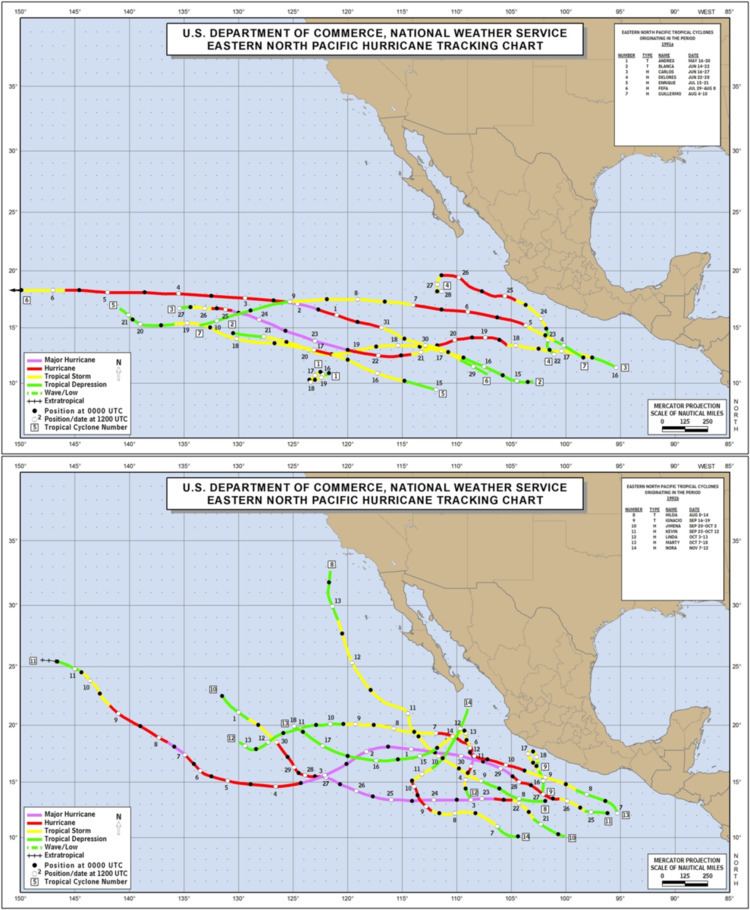 | ||
The 1991 Pacific hurricane season produced 16 tropical depressions, 14 of which became tropical storms or hurricanes. The season officially started on May 15, 1997 in the Eastern Pacific—designated as the area east of 140°W—and on June 1, 1997 in the Central Pacific, which is between the International Date Line and 140°W. The season officially ended in both basins on November 30, 1997. These dates typically limit the period of each year when most tropical cyclones form in the eastern Pacific basin. This timeline documents all the storm formations, strengthening, weakening, landfalls, extratropical transitions, as well as dissipation. The timeline also includes information which was not operationally released, meaning that information from post-storm reviews by the National Hurricane Center, such as information on a storm that was not operationally warned on, has been included.
Contents
The first storm formed on May 16 and the final storm dissipated on November 12, thus ending the season. There were 16 cyclones. including 2 tropical depressions that failed to reach tropical storm intensity. Ten storms in 1991 reached hurricane status, with five of these reached Category 3 intensity or higher on the Saffir-Simpson hurricane scale, thereby becoming major hurricanes.
None of the tropical storms or hurricanes made landfall, a tropical depression came ashore near Salina Cruz, Mexico, on the last day of June. The depression caused the only fatality of the season, injured five hundred, with two people missing. Delores, Ignacio and Marty threatened the coast of Mexico, coming close enough to require tropical cyclone watches and warnings. Of these, Ignacio was also responsible for 40 injuries as the system passed just offshore. Public advisories were issued for four other systems due to the threat of heavy rain along the Mexican coast.
